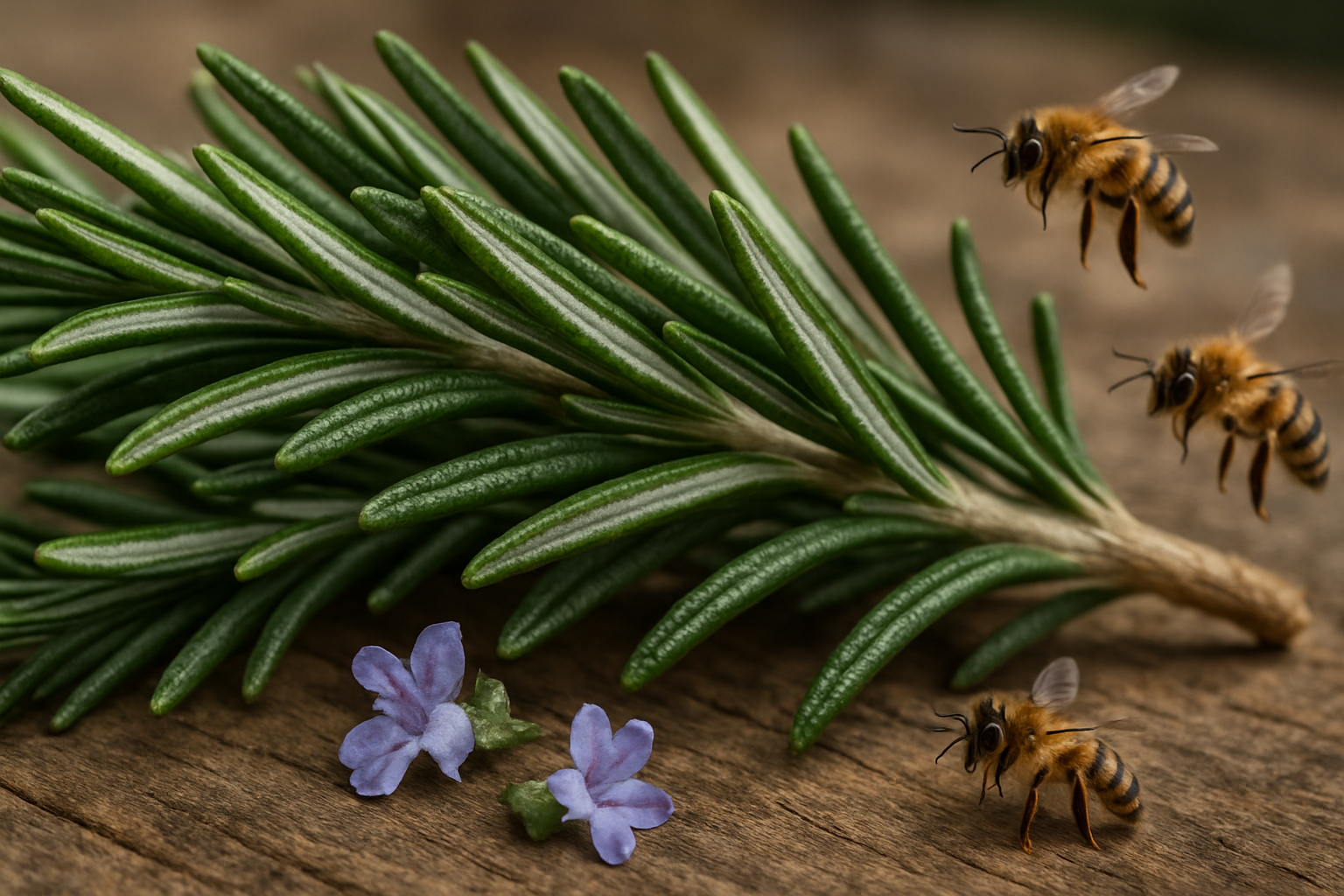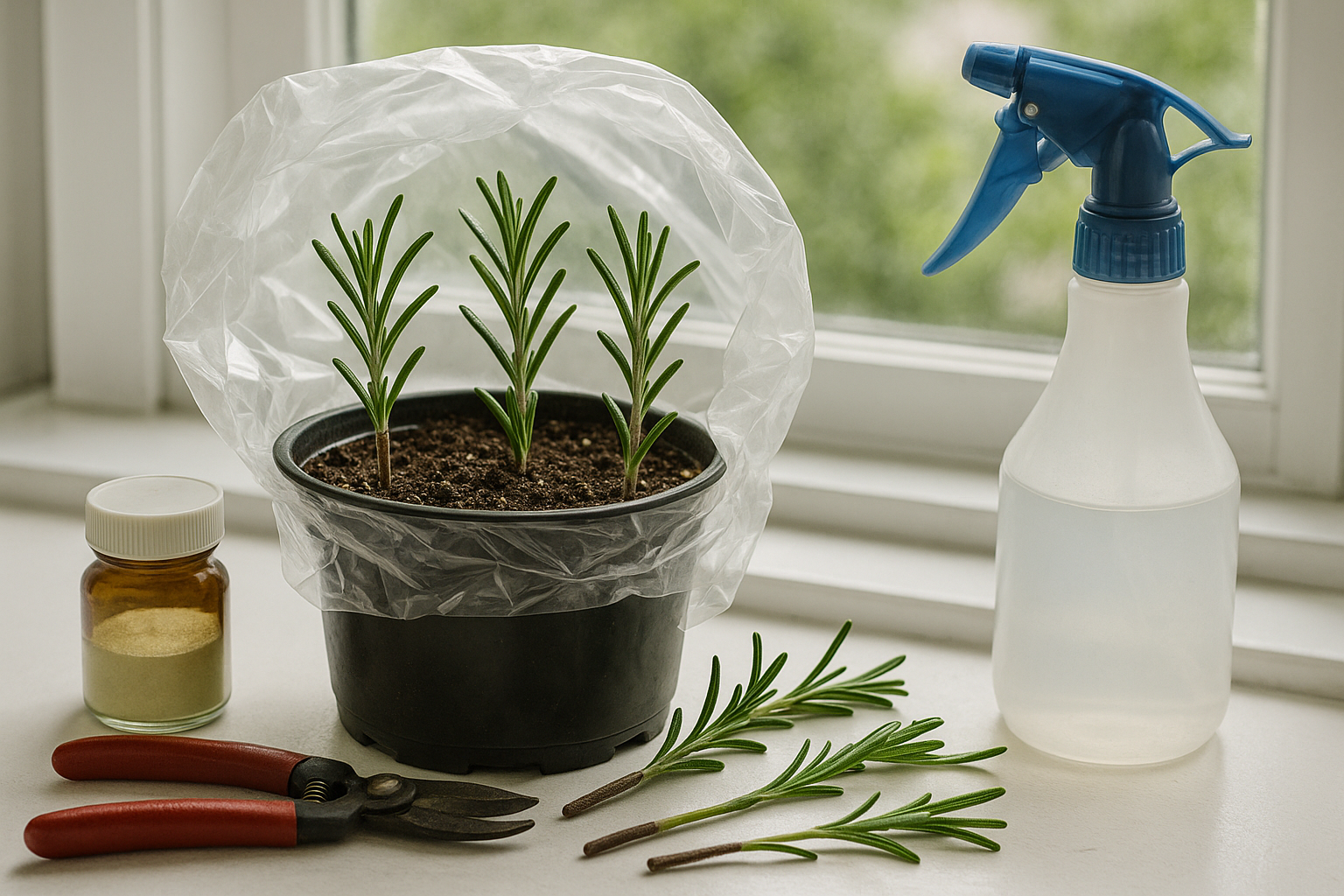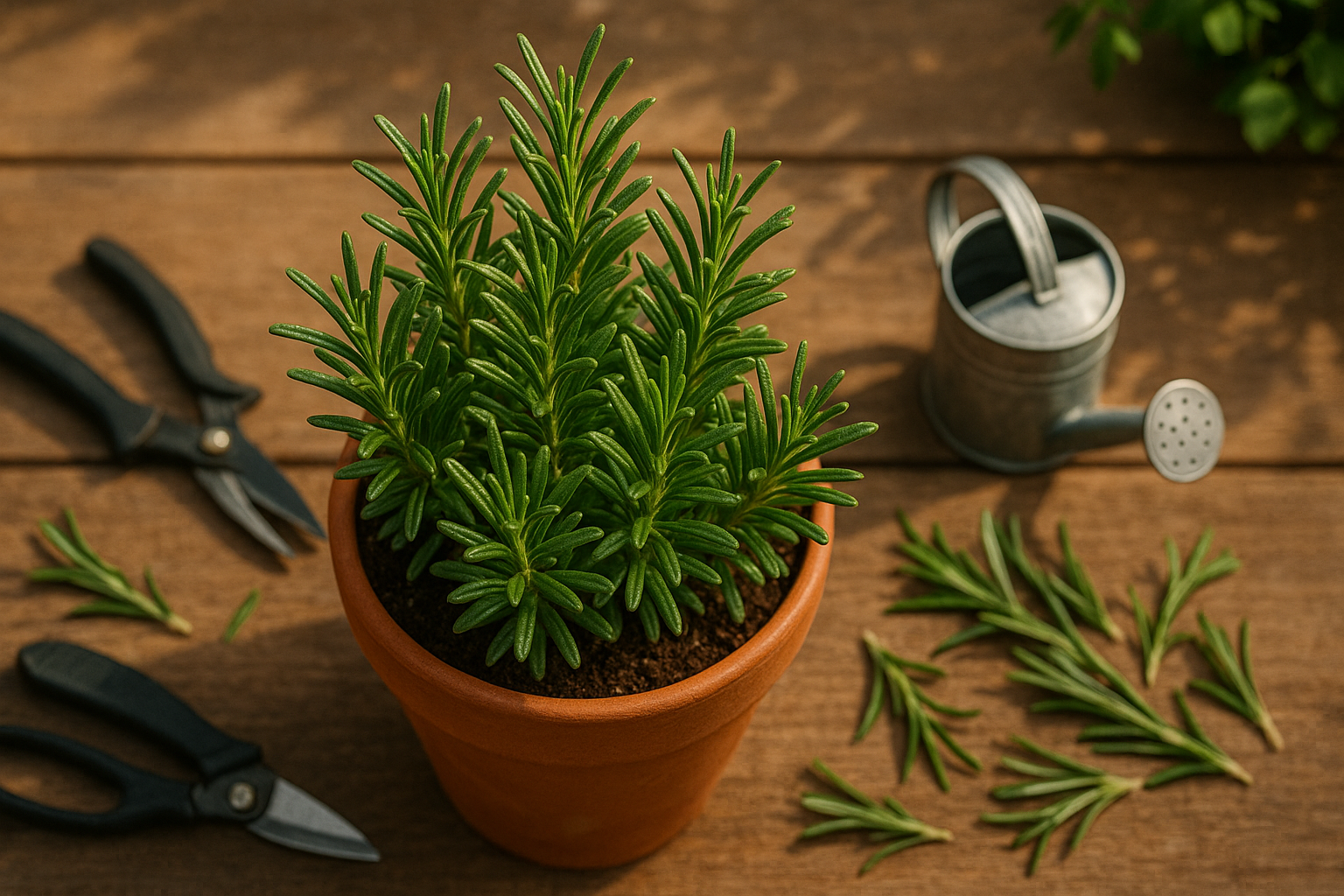Introduction
Curious about how to grow rosemary at home? This fragrant herb is beloved by home cooks and gardeners alike for its versatility, Mediterranean aroma, and countless health benefits. Rosemary not only elevates a simple meal but also thrives as a beautiful, beginner-friendly plant—perfect for busy schedules and even those new to gardening.
Growing rosemary at home means you’ll always have fresh sprigs on hand for roasting potatoes, garnishing drinks, or making homemade remedies. The best part? Rosemary is incredibly resilient and low-maintenance, needing only a bit of sunlight and well-draining soil to flourish.
In this beginner guide, you’ll find step-by-step instructions, essential tips for healthy growth, and common mistakes to avoid, so you can nurture a thriving rosemary plant no matter your space or experience level. Ready to see just how easy and rewarding it can be to grow your own rosemary? Let’s get started!
Rosemary Basics & Benefits

Rosemary is a hardy, evergreen herb with needle-like leaves that are deep green on top and silvery beneath, often growing on upright, woody stems. Its appearance is both distinctive and attractive, making it a favorite for borders or container displays. The fragrance of rosemary is unmistakable: earthy, piney, and slightly minty, infusing the air or any dish with a refreshing aroma.
Popular varieties include:
- Arp — known for its cold tolerance
- Tuscan Blue — featuring tall, sturdy branches
- Prostratus — a prostrate variety ideal for ground cover or cascading from pots
Growing rosemary offers a wealth of benefits, especially in the kitchen where fresh sprigs elevate roasted meats, potatoes, and Mediterranean dishes with robust flavor. Beyond culinary uses, rosemary contains natural antioxidants like rosmarinic acid, believed to support memory, digestion, and immunity. Its essential oils are also prized for stress relief and uplifting energy when used in sachets or homemade cleaners.
The plant’s versatility adds to its appeal. It thrives indoors on a sunny windowsill or outdoors in garden beds and pots, making it accessible even to those with limited space. As a drought-resistant plant, it attracts pollinators like bees but requires minimal water and maintenance, which makes it perfect for busy or beginner gardeners.
Adding rosemary to your home is both practical and rewarding, offering beauty, utility, and sensory pleasure no matter where or how you choose to grow it.
Picking the Right Variety & Sourcing Plants
Choosing the best rosemary variety depends on how and where you want to grow it. Upright types like ‘Arp’ and ‘Tuscan Blue’ are compact and ideal for garden beds or containers, with woody stems that make pruning and harvesting easy.
If you’re interested in a cascading effect along walls or in hanging baskets, trailing varieties like ‘Prostratus’ offer graceful, trailing foliage. For those with limited space or who prefer indoor gardening, compact varieties such as ‘Blue Boy’ or ‘Salem’ thrive in pots that can be moved inside during colder months.
When it comes to starting your rosemary, you have a few options: seeds, cuttings, or young plants. Seeds are budget-friendly but can be slow to sprout and tricky for beginners, often taking several weeks just to germinate.
Propagating from cuttings is faster and produces plants true to type; simply snip a healthy stem, strip the lower leaves, and place it in water or moist soil until roots develop.
For the quickest results, purchase young plants from a nursery or garden center. Look for specimens with vibrant green leaves, strong stems, and no signs of pests or wilting. Reliable sources include local nurseries, farmers’ markets, and reputable online suppliers like Burpee or Baker Creek.
Whichever source you choose, avoid plants with yellowing leaves or soggy soil, as these may already be stressed or diseased. With the right variety and healthy plants, your rosemary is set for success at home.
Creating the Perfect Growing Environment
Achieving the perfect growing environment starts with understanding the basics: soil, sunlight, space, and temperature. Most herbs and vegetables thrive in well-draining soil rich in organic matter—think loose, crumbly earth that lets water flow through but retains enough moisture for roots. Aim for a soil pH between 6.0 and 7.0, the sweet spot for most edible plants, and consider amending with compost or aged manure for a nutrient boost.
Sunlight is just as crucial; most edibles need at least 6–8 hours of direct sun daily, so pick a spot that gets steady morning or afternoon light. If you’re deciding between container and ground planting, remember containers give you flexibility to move plants for the best light and shelter, while in-ground beds offer roots room to spread and access to steadier moisture.
For containers, choose pots that are at least 10–12 inches deep (larger for root vegetables or woody herbs) and have drainage holes to prevent soggy soil and root rot. Lightweight plastic pots are easy to move, while ceramic or clay pots provide better outdoor stability. Indoors, place containers near a south-facing window or supplement with grow lights during short winter days; outdoors, keep pots a few inches apart for airflow and to prevent disease.
Lastly, herbs and most veggies prefer temperatures between 60–75°F—protect young plants from cold snaps using row covers or by moving containers indoors. By dialing in these few key factors, you’ll set yourself up for a lush, productive garden whether you’re growing basil on your kitchen windowsill or tomatoes on your sunny patio.
Planting & Propagating Rosemary

Growing rosemary is a rewarding process, whether you’re tucking it into a garden bed or starting a pot on your kitchen windowsill. For pots, choose a container at least 8–10 inches wide with drainage holes, and fill it with a light, well-draining potting mix. Set the rosemary plant so the top of its root ball sits just below the rim. Water when the top inch of soil feels dry, and place the pot in a spot that gets at least six hours of sunlight daily.
In garden beds, select a sunny location with well-drained soil—amend clay-heavy soil with sand or compost to improve drainage. Space your rosemary plants 2 to 3 feet apart, as mature bushes tend to spread.
Propagating Rosemary from Cuttings
Rosemary also propagates easily from cuttings. Simply snip a healthy 4–6 inch stem just below a leaf node, strip the leaves from the bottom half, and dip the cut end in rooting hormone (optional, but it helps). Place the cutting in a small pot of moist seed-starting mix or perlite, then cover it loosely with a plastic bag to hold in humidity.
Keep the cutting warm and bright; roots should develop in about three to four weeks. Once your new rosemary plants are well-rooted, transplant them outdoors after the danger of frost has passed and nighttime temperatures are reliably above 50°F (10°C).
Hardening Off Your Rosemary Plants
If you’re moving plants from indoors to the garden, “harden them off” first by setting them outside for a few hours each day, gradually increasing their outdoor time. This helps prevent transplant shock and gives your rosemary the best start.
Rosemary Care & Maintenance
Caring for rosemary is simple, but knowing a few key tricks can make all the difference between a lush, fragrant shrub and a sad, struggling plant. Rosemary hates wet feet, so always allow the top inch of soil to dry out before watering. Water deeply, then hold off until the soil is dry—especially if growing it indoors or in a pot. Overwatering is a common cause of root rot, so err on the dry side, especially in winter.
As for feeding, rosemary is not a heavy feeder. In spring, when new growth appears, apply a balanced, slow-release fertilizer or use a diluted liquid feed once a month through summer. Avoid high-nitrogen fertilizers; they can cause leggy growth and reduce flavor.
Pruning keeps rosemary bushy and healthy: snip back the top inch or two after blooms fade, and trim up to one-third of the plant each year to encourage fresh shoots. Regular harvesting of sprigs has the same effect as pruning, so use those fresh cuttings in your kitchen!
To protect your plant from pests like aphids or spider mites, periodically check the leaves—if you see pests, a gentle spray of water or insecticidal soap works well. Good air circulation also helps prevent fungal troubles like powdery mildew.
In areas with harsh winters, bring potted rosemary indoors before frost or cover outdoor plants with row covers when cold snaps hit. During scorching summers, provide some afternoon shade to prevent leaf scorch.
With a little routine care, rosemary will thrive and provide years of culinary delight.
Harvesting & Storing Rosemary
To get the most from your rosemary plants, harvest sprigs in the morning after the dew has dried but before the sun gets too strong—this is when the oils that give rosemary its flavor are most concentrated. Use clean, sharp scissors to snip 4–6 inch stems, leaving at least two-thirds of the plant intact to keep it healthy and vigorous.
For drying, bundle the harvested sprigs with string and hang them upside down in a dark, well-ventilated space for about two weeks, or spread them on a mesh rack. Once the leaves are dry and brittle, strip them from the stems and store them in an airtight container in a cool, dark cupboard; this preserves their flavor for months.
If you prefer freezing, chop the rosemary leaves and place them in an ice cube tray, covering them with olive oil or water before freezing—these cubes make an easy flavor boost for soups and stews.
Fresh rosemary is excellent in roasted meats, potatoes, and breads, while dried rosemary works beautifully sprinkled over pizza, mixed into marinades, or infused into oils. By following these simple methods, you’ll have fragrant rosemary on hand for all your favorite recipes, no matter the season.
Common Problems & Easy Solutions
Growing rosemary at home can be rewarding, but even experienced gardeners face issues like yellowing leaves, root rot, and persistent pests. If you notice yellow leaves, it’s often a sign of overwatering or poor drainage—make sure your pot isn’t sitting in water and allow the soil to dry out between waterings.
Root rot is another common problem, usually caused by soggy conditions. To fix this, ensure your rosemary is planted in well-draining soil. If needed, repot the plant into a container with drainage holes, trimming away any mushy roots.
Pests like aphids or spider mites can also stress rosemary. A simple solution is to spray the leaves with a mix of water and a few drops of mild dish soap or introduce beneficial insects like ladybugs.
Regular pruning promotes airflow and keeps foliage healthy, while avoiding overcrowded pots helps prevent both disease and pest infestations. Always provide your rosemary with plenty of sunlight—at least six hours a day—to support strong growth and natural resistance to problems.
By catching issues early and practicing good plant care, you’ll help your rosemary thrive year-round.
Conclusion & Quick Tips Recap
Growing rosemary at home is easier than you might think—just start with well-draining soil, a sunny spot, and avoid overwatering. Regular pruning keeps your plant healthy and bushy, while bringing sprigs into the kitchen lets you enjoy fresh flavor all year.
Give it a try—gardeners of all levels can succeed with rosemary, whether on a windowsill or balcony! Once you’re comfortable, explore adding another herb like basil or thyme, share your rosemary-growing journey with friends, or check out our related posts for more easy herb gardening tips. Happy growing!
